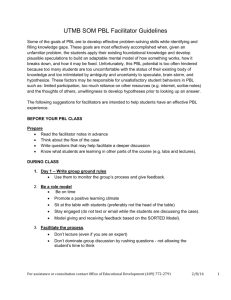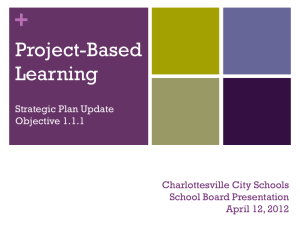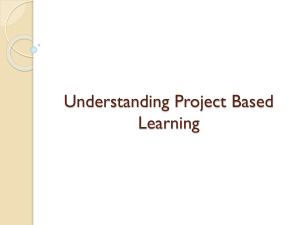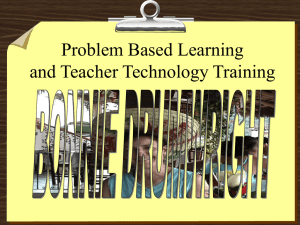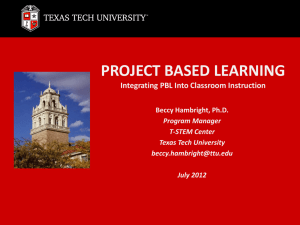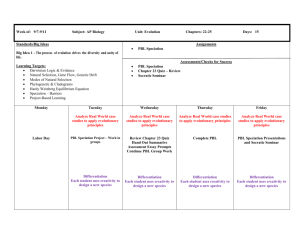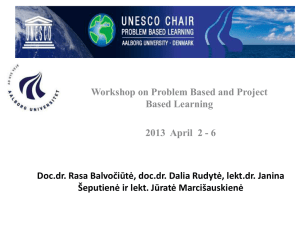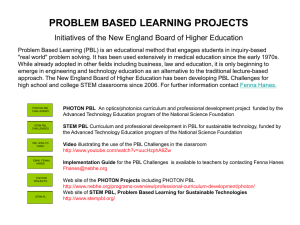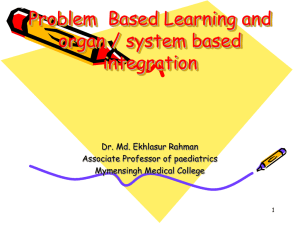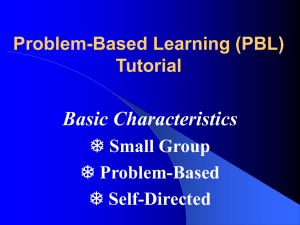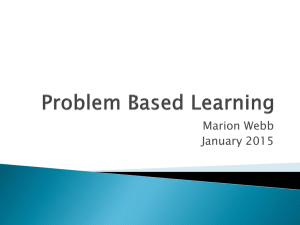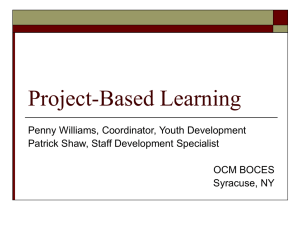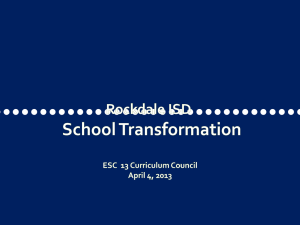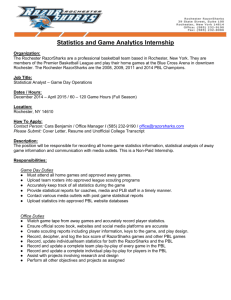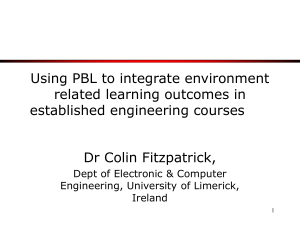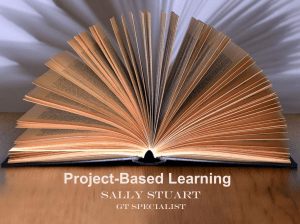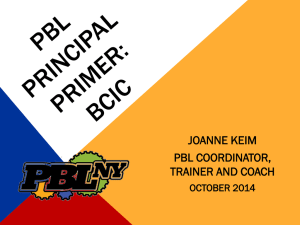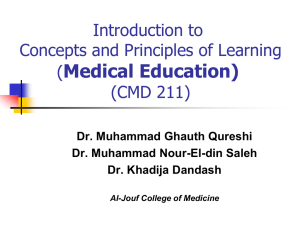Projects, Performances AND College and Career Ready
advertisement
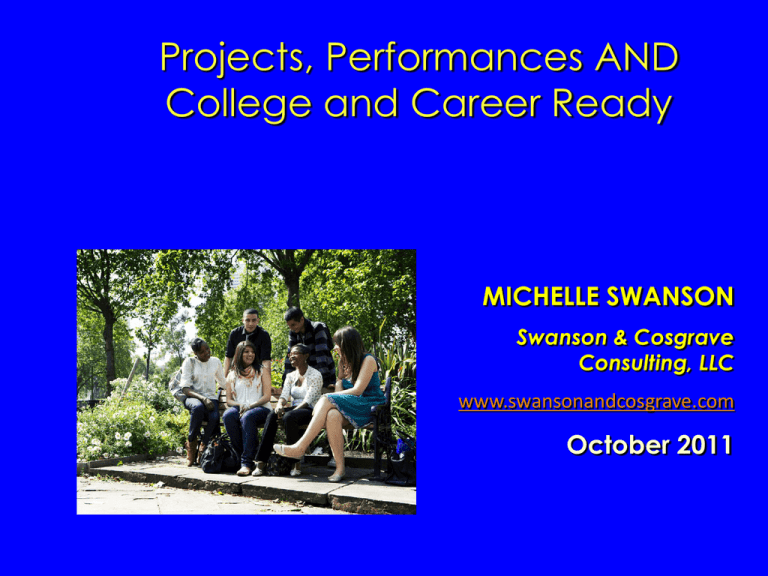
Projects, Performances AND College and Career Ready MICHELLE SWANSON Swanson & Cosgrave Consulting, LLC www.swansonandcosgrave.com October 2011 COSTA’S HABITS OF MIND 1) Persisting 2) Managing Impulsivity 3) Listening With Understanding and Empathy 4) Thinking Flexibly 5) Thinking About Thinking (Metacognition) 6) Striving for Accuracy 7) Questioning and Posing Problems 8) Applying Past Knowledge to New Situations HABITS OF MIND, CONTINUED… 9) Thinking & Communicating With Clarity & Precision 10) Gathering Data Through All Senses 11) Creating, Imagining, Innovating 12) Responding With Wonderment & Awe 13) Taking Responsible Risks 14) Finding Humor 15) Thinking Interdependently 16) Remaining Open to Continuous Learning 21st Century Skills COLLEGE & CAREER READY CONTEXTUAL SKILLS & AWARENESS ACADEMIC BEHAVIORS KEY CONTENT KNOWLEDGE KEY COGNITIVE STRATEGIES From College & Career Ready: Helping All Students Succeed Beyond High School by David Conley COLLEGE & CAREER READY KEY COGNITIVE STRATEGIES From College & Career Ready: Helping All Students Succeed Beyond High School by David Conley KEY COGNITIVE STRATEGIES From the work of David Conley COLLEGE & CAREER READY Problem formation Research Interpretation Communication Accuracy KEY CONTENT KNOWLEDGE KEY COGNITIVE STRATEGIES From College & Career Ready: Helping All Students Succeed Beyond High School by David Conley PBL RESEARCH BASE “There is now a massive amount of evidence from all realms of science that unless individuals take a very active role in what it is they’re studying, unless they learn to ask questions, to do things hands-on, to essentially recreate things in their own mind and transform them as needed, the ideas just disappear.” -- Howard Gardner, Harvard University PERFORMANCE MAPPING PERFORMANCE MAPPING PERFORMANCE MAPPING TOPICS STANDARDS PERFORMANCES INITIAL LOGIN CODES www.connectedstudios.org PERFORMANCE VERBS Table Talk: • What is performance assessment— characteristics, elements—craft a definition for your team. • What are the benefits for students (and teachers?) • What are the cautions? DEGREES OF CURRICULAR ALIGNMENT TRADITIONAL PARALLEL INTERRELATED INTEGRATED WHAT IS A PROJECT? Well-designed projects ask students to: Tackle real problems and issues that have importance to people beyond the classroom. Actively engage in their learning and make important choices during the project. Demonstrate in tangible ways that they have learned key concepts and skills. KEY PBL COMPONENTS PROJECT PROJECT DESIGN IMPLEMENTATION Simultaneous Outcomes Scaffolding Mapping to Standards 9 Steps of PBL Six A’s of PBL Marzano’s Essential 9 PROJECT ASSESSMENT Products & Performances Feedback Strategies Authentic Audiences TRADITIONAL VS. PBL RESEARCH PAPER Required Elements: Select a disease to study Go to library and do research Write ten pages Use proper essay form Include a bibliography TRADITIONAL VS. PBL HEALTH PROJECT Required Elements: Develop family medical histories Write proposal to study health issue of personal or community interest Keep research log, including citations Produce a newsletter Develop lesson plans and materials for underserved population Present to real audience DEGREES OF CURRICULAR ALIGNMENT TRADITIONAL PARALLEL INTERRELATED INTEGRATED INTEGRATED UNIT DESIGN STEPS 1. Identify themes through curriculum mapping 2. Decide on topic of integrated unit 3. Craft the essential question 4. Identify topical or key questions 5. Assign responsibilities 6. Review and revise the curriculum map 7. Set the learning scenario 8. Establish learning assessments 9. Check alignment with standards 10. Connect with industry and postsecondary partners 11. Write lesson plans 12. Evaluate the unit From ConnectEd THEMES AND DRIVING QUESTIONS • Two approaches to focusing project content: – Themes – Driving or Essential Questions ? THEMES AND DRIVING QUESTIONS How can we, as _____ do ______ so that ______? ? THEMES AND DRIVING QUESTIONS How can we, as _____ (who) do ______(action) so that ______? (result) ? PROJECT SCAFFOLDING • Structure Organizing features like groups, benchmarks, and timelines • Content Academic foundation for work • Training Explicit skill-building in all required production areas • Expertise Professional-level training and consultation provided by experts PROJECT SCAFFOLDING • Oversight Structured times for teacher to meet, motivate, and mentor student teams • Documents Handouts to help explain and organize project • Tools The technological resources necessary to produce products & performances • Time In-class opportunities for students to meet, research, produce, exhibit, evaluate Jigsaw Pages • • • • • • • Overview – Pg. 14 #1 – pg 15 #2 – pg 16-18 #3 – pg 19 + 23 #4 – pg 20-21 #5 – pg 24 #6 – pg 25-26 FACTORS THAT SUPPORT PBL In the Classroom: Safe, respectful learning environments Personalized teacher-student relationships Productive peer relationships Transformed teacher roles Intensified teacher engagement and commitment Best practices of daily instruction FACTORS THAT SUPPORT PBL At the School: Supportive school structures (SLCs/Academies/Pathways) Professional collaboration Administrative support FACTORS THAT SUPPORT PBL In the Community: Engaged employer partners Parent involvement in learning

